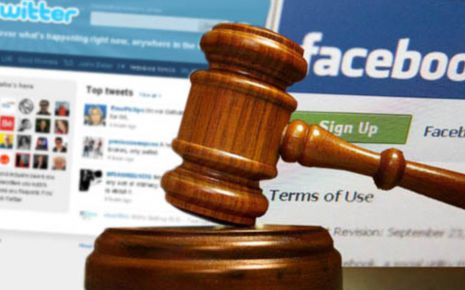GHADI and TIME Held to Be Deceptively Similar Trademark
Background of the Case:
This case revolves around a trademark dispute between the plaintiff, the registered owner of the trademark "GHADI," and the defendant, who is alleged to have used the trademark "TIME" for its goods. The dispute concerns the potential infringement of the plaintiff's well-known mark "GHADI," which is primarily used for washing detergents, by the defendant's use of a mark allegedly resembling "GHADI" in terms of visual and phonetic elements.
The plaintiff, a well-established brand in the Indian detergent market, claimed that the defendant's trademark "TIME" created confusion in the minds of consumers due to its deceptive similarity to "GHADI." As a result, the plaintiff argued that the defendant's use of "TIME" would not only mislead the public into thinking the products originated from the same source but also dilute the distinctive character of the "GHADI" brand.
The plaintiff initiated legal proceedings, seeking an interim injunction to prevent the defendant from further using the trademark "TIME," alleging that it infringed their trademark rights and posed a risk of significant damage to their brand’s reputation.
Conclusion:
The court’s decision in this case highlights the importance of protecting registered trademarks from deceptive imitation, especially when such imitation has the potential to confuse consumers and damage the goodwill associated with a brand. The ruling reaffirms the principle that during the subsistence of a registered trademark, the rights of the trademark owner must be safeguarded, and any deceptively similar marks that may cause confusion or dilute the distinctiveness of the brand should be restrained. By granting the interim injunction, the court protected the plaintiff’s trademark rights while the case was further litigated.
Case Citation: RSPL Vs Ram Nagar Khadi Udyog: 12.09.2024: CS(COMM) 646/2024:Delhi High Court: Saurabh Banerjee, H.J.
Disclaimer:
The information shared here is intended to serve the public interest by offering insights and perspectives. However, readers are advised to exercise their own discretion when interpreting and applying this information. The content herein is subjective and may contain errors in perception, interpretation, and presentation.
Written By: Advocate Ajay Amitabh Suman, IP Adjutor - Patent and Trademark Attorney
Email: [email protected], Ph no: 9990389539
This case revolves around a trademark dispute between the plaintiff, the registered owner of the trademark "GHADI," and the defendant, who is alleged to have used the trademark "TIME" for its goods. The dispute concerns the potential infringement of the plaintiff's well-known mark "GHADI," which is primarily used for washing detergents, by the defendant's use of a mark allegedly resembling "GHADI" in terms of visual and phonetic elements.
The plaintiff, a well-established brand in the Indian detergent market, claimed that the defendant's trademark "TIME" created confusion in the minds of consumers due to its deceptive similarity to "GHADI." As a result, the plaintiff argued that the defendant's use of "TIME" would not only mislead the public into thinking the products originated from the same source but also dilute the distinctive character of the "GHADI" brand.
The plaintiff initiated legal proceedings, seeking an interim injunction to prevent the defendant from further using the trademark "TIME," alleging that it infringed their trademark rights and posed a risk of significant damage to their brand’s reputation.
Issue of the Case:
- The core issue before the court was whether the defendant’s use of the trademark "TIME" amounted to trademark infringement due to its deceptive similarity to the plaintiff's registered trademark "GHADI." Specifically, the court had to determine whether the visual and phonetic resemblance between "GHADI" and "TIME" was sufficient to cause confusion or deception among consumers, thereby constituting infringement under the Trade Marks Act, 1999.
- The relevant legal question centered on Section 29 of the Trade Marks Act, which outlines the grounds for trademark infringement, particularly focusing on deceptive similarity and likelihood of confusion in the marketplace.
Contentions of the Parties:
Plaintiff's Contentions:
-
The plaintiff, a reputed and long-standing user of the trademark "GHADI," raised the following key arguments:
- Prior Use and Registration: The plaintiff argued that they had been using the trademark "GHADI" for a considerable period and that the mark was widely recognized in the market, especially in connection with detergents and washing powders. They had duly registered the trademark "GHADI" under the Trade Marks Act, 1999, granting them exclusive rights to use the mark.
- Deceptive Similarity: The plaintiff contended that the defendant’s trademark "TIME" was deceptively similar to "GHADI" in both visual appearance and phonetic pronunciation. They argued that although the two words might seem different at first glance, the overall impression created by the marks was sufficiently similar to confuse the average consumer, particularly those who are not paying close attention to the details.
- Likelihood of Confusion: The plaintiff argued that the similarity between the marks was likely to cause confusion in the market, especially among ordinary consumers who might mistake the defendant’s products for those of the plaintiff. This confusion could lead to consumers associating the defendant’s goods with the plaintiff's well-known brand, thereby causing dilution of the distinctiveness of the "GHADI" mark.
- Irreparable Harm: The plaintiff further contended that if the defendant continued to use the "TIME" trademark, it would cause irreparable harm to their business and brand reputation. They argued that the goodwill built around the "GHADI" mark over the years would be damaged, leading to financial losses and a weakening of their market position.
Issues Dealt with by the Court:
-
The court addressed both procedural and substantive issues in this case.
-
Substantive Issues:
- Trademark Infringement and Deceptive Similarity: The court had to determine whether the trademark "TIME" used by the defendant was deceptively similar to the plaintiff’s trademark "GHADI" and whether such similarity would cause confusion among consumers.
- Balance of Convenience: The court assessed the balance of convenience— whether granting the injunction would unfairly harm the defendant’s business or whether the plaintiff would suffer more if the injunction was denied.
- Irreparable Harm: The court considered whether the plaintiff would suffer irreparable damage to their reputation and business if the defendant was allowed to continue using the "TIME" mark, particularly in the form of lost goodwill, consumer confusion, and market share erosion.
-
Substantive Issues:
Reasoning and Final Decision:
- After reviewing the evidence and the legal arguments presented by the plaintiff, the court found that the plaintiff had established a prima facie case of trademark infringement. The court concluded that the defendant's use of the trademark "TIME" was deceptively similar to the plaintiff’s registered trademark "GHADI."
-
The court’s reasoning was based on the following factors:
-
Deceptive Similarity: The court noted that while "GHADI" and
"TIME" might appear different in isolation, their overall presentation—
including visual elements and phonetic similarity—created a risk of confusion among
consumers. The court emphasized that in trademark law, the test for deceptive similarity
does not require exact replication; it is enough if the marks are so similar that they are
likely to mislead an average consumer into associating the two.
-
Prior User and Registrant: The court acknowledged the plaintiff’s status as
the prior adopter and registered owner of the GHADI trademark. This
gave the plaintiff a strong legal standing, as their registration under the Trade Marks Act
granted them exclusive rights to use the mark and prevent others from using deceptively
similar marks.
-
Likelihood of Confusion: The court found that the defendant’s use of the
"TIME" mark was likely to create confusion in the market, especially given
the similarity in the products being sold (both related to household cleaning products). The
court noted that ordinary consumers, who do not scrutinize trademarks closely, could easily
mistake the defendant’s products for those of the plaintiff, thereby harming the plaintiff’s
brand and goodwill.
- Irreparable Harm: The court concluded that the plaintiff would suffer irreparable harm if the defendant was not restrained from using the infringing mark. The court reasoned that financial compensation alone would not adequately remedy the loss of goodwill and damage to reputation that the plaintiff might suffer due to ongoing consumer confusion.
-
Deceptive Similarity: The court noted that while "GHADI" and
"TIME" might appear different in isolation, their overall presentation—
including visual elements and phonetic similarity—created a risk of confusion among
consumers. The court emphasized that in trademark law, the test for deceptive similarity
does not require exact replication; it is enough if the marks are so similar that they are
likely to mislead an average consumer into associating the two.
Conclusion:
The court’s decision in this case highlights the importance of protecting registered trademarks from deceptive imitation, especially when such imitation has the potential to confuse consumers and damage the goodwill associated with a brand. The ruling reaffirms the principle that during the subsistence of a registered trademark, the rights of the trademark owner must be safeguarded, and any deceptively similar marks that may cause confusion or dilute the distinctiveness of the brand should be restrained. By granting the interim injunction, the court protected the plaintiff’s trademark rights while the case was further litigated.
Case Citation: RSPL Vs Ram Nagar Khadi Udyog: 12.09.2024: CS(COMM) 646/2024:Delhi High Court: Saurabh Banerjee, H.J.
Disclaimer:
The information shared here is intended to serve the public interest by offering insights and perspectives. However, readers are advised to exercise their own discretion when interpreting and applying this information. The content herein is subjective and may contain errors in perception, interpretation, and presentation.
Written By: Advocate Ajay Amitabh Suman, IP Adjutor - Patent and Trademark Attorney
Email: [email protected], Ph no: 9990389539
Law Article in India
Legal Question & Answers
Lawyers in India - Search By City
LawArticles
How To File For Mutual Divorce In Delhi

How To File For Mutual Divorce In Delhi Mutual Consent Divorce is the Simplest Way to Obtain a D...
Increased Age For Girls Marriage

It is hoped that the Prohibition of Child Marriage (Amendment) Bill, 2021, which intends to inc...
Facade of Social Media

One may very easily get absorbed in the lives of others as one scrolls through a Facebook news ...
Section 482 CrPc - Quashing Of FIR: Guid...

The Inherent power under Section 482 in The Code Of Criminal Procedure, 1973 (37th Chapter of t...
The Uniform Civil Code (UCC) in India: A...

The Uniform Civil Code (UCC) is a concept that proposes the unification of personal laws across...
Role Of Artificial Intelligence In Legal...

Artificial intelligence (AI) is revolutionizing various sectors of the economy, and the legal i...






Please Drop Your Comments